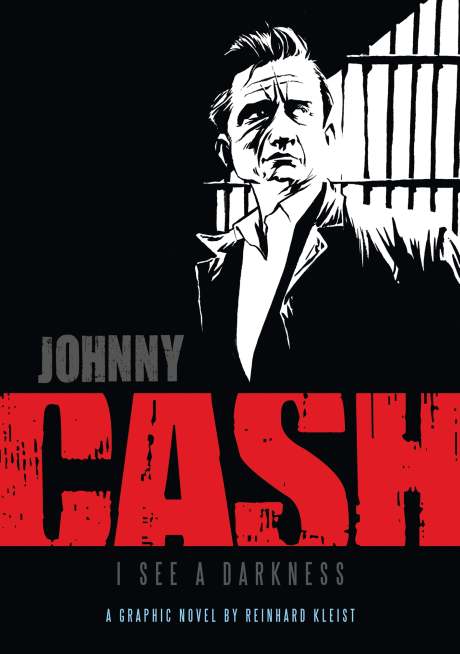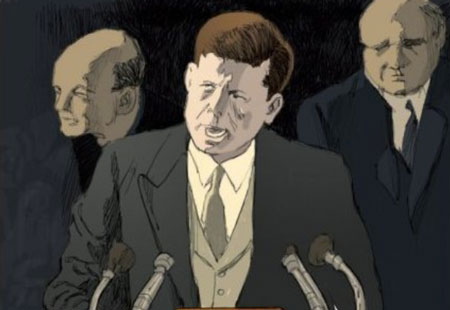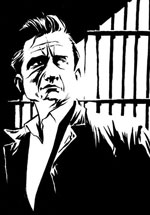
Written and drawn by Reinhard Kleist.
Abrams ComicArts, 2009.
This book is part graphic biography and part lyrical interpretation.
There were two major pieces of media that I enjoyed that had a strong impact on how I experienced this book. One was the 2006 film Walk The Line. The other was The Man In Black: His Own Story In His Own Words, his autobiography published in 1983. Cash would later revisit the autobiography, but Man In Black ends with the acceptance of sobriety, quitting smoking and returning to his Christian background with renewed faith.
I See A Darkness overlaps material from those two pieces. It deals mainly with the early years of Cash’s career, climaxing with his performance at Folsom Prison. There is some material set after the death of June, his wife, in the last year of his life while he is recording an album produced by Rick Rubin.
What this book offers is some interesting visual interpretations of Cash’s songs. Of particular note is Cocaine Blues from the Folsom Prison performance. The story of the song is played out over several pages, the lyrics recounted as text that weaves through the panels. The song A Boy Named Sue is also developed with this method, and to great effect. In a way it was able to do things which a song could not by providing images to accompany the text of the lyrics. In a way it Continue reading REVIEW: Johnny Cash – I See A Darkness



 How would you feel if someone you went to high school with showed up on the news as a murderer? That’s what happened to the cartoonist Derf Backderf, who was acquainted with future serial killer Jeffrey Dahmer when they were teenagers in the ’70s.
How would you feel if someone you went to high school with showed up on the news as a murderer? That’s what happened to the cartoonist Derf Backderf, who was acquainted with future serial killer Jeffrey Dahmer when they were teenagers in the ’70s. FLASHBACK! Though Asterios Polyp made the point that comics and (written) music are similar, doing a comic about music is not such an easy task. But Reinhard Kleist beautifully presents the music, and life, of a country music legend in Johnny Cash: I See a Darkness, recently released in English. How does it compare with the Cash biopic Walk the Line? Tim and Paul review.
FLASHBACK! Though Asterios Polyp made the point that comics and (written) music are similar, doing a comic about music is not such an easy task. But Reinhard Kleist beautifully presents the music, and life, of a country music legend in Johnny Cash: I See a Darkness, recently released in English. How does it compare with the Cash biopic Walk the Line? Tim and Paul review.
